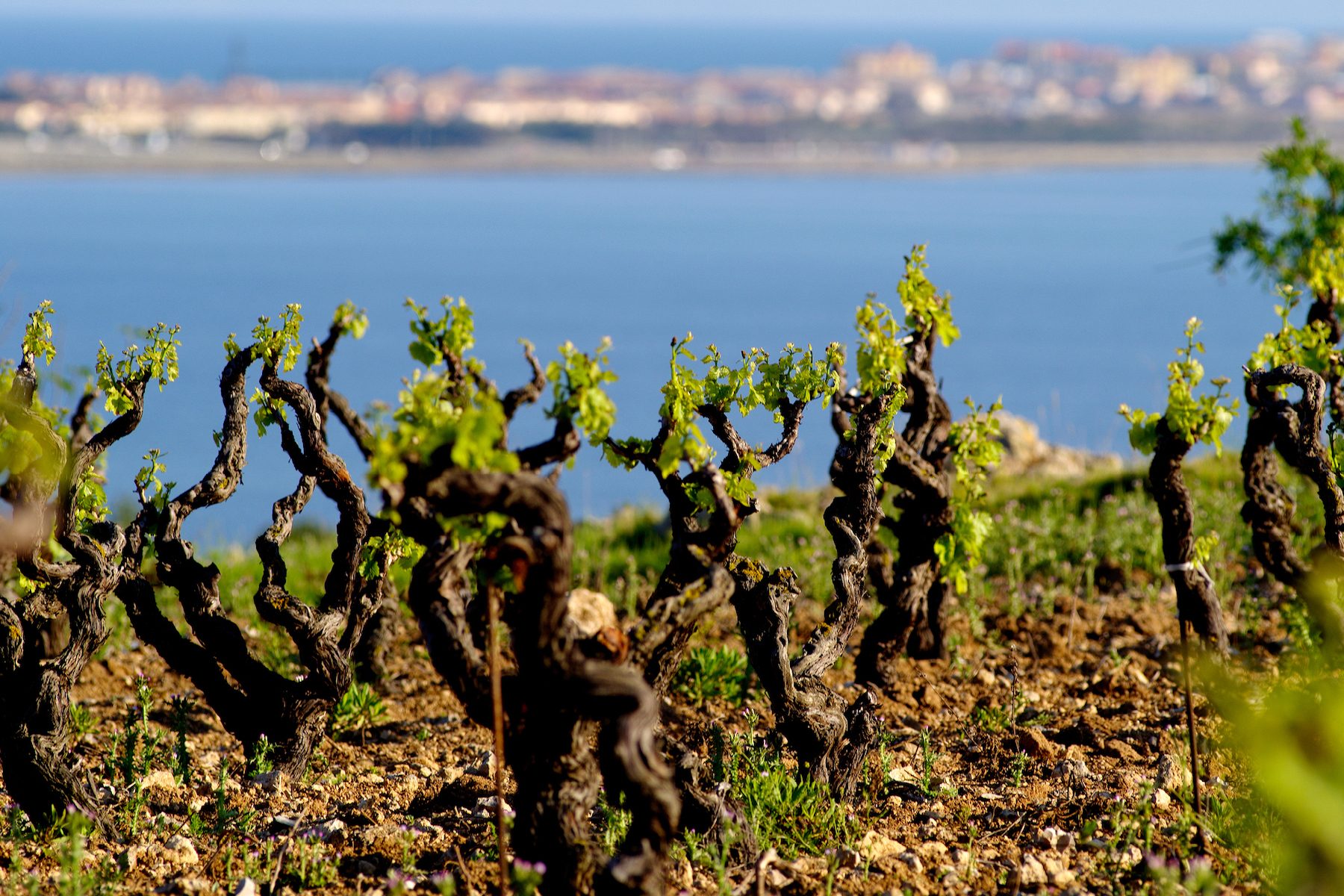| Traditionally the Languedoc is a region of red wines. With the exception of Clairette du Languedoc, all the early appellations concentrated on red and tended to ignore white wine. St. Chinian and Faugères were appellations for red wine in 1982, whereas their white counterparts were not created until 2005. In the extensive Coteaux du Languedoc, Picpoul de Pinet was recognized as a small pocket of white wine, and indeed became an appellation in its own right in 2005 La Clape, another coastal appellation, has also developed a distinctive identity for its white wines, depending on the maritime influence as well as a grape variety, Bourboulenc, that is rarely grown elsewhere in the Languedoc. But such has been the emphasis on red wines, that the two most recently created appellations, Pic St Loup and Terrasses du Larzac, are for red wine only, despite the fact that those vineyards are amongst the coolest and highest of the whole region. Any white wine is either an IGP or plain AOP Languedoc. In the cooler region of Limoux, white was recognized as an appellation before red, and after sparkling wine, in 1993, with the traditional Mauzac, as well as Chardonnay and Chenin Blanc, and the appellation is unusual in demanding some ageing in oak. Elsewhere, the international varieties, Chardonnay and Sauvignon feature in Pays d’Oc, but certainly do not contribute to the originality of the Languedoc. But all that may well be about to change. There is no doubt that the white wines of the Languedoc are getting better and better and deserve a much wider appreciation. Béatrice Fillon from Clos du Serres in the Terrasses du Larzac summed it up very nicely when she observed: ‘There is a whole history to build for white wine. It will take time, with new areas to discover and develop, with a growing choice of grape varieties.’ There is a reassessment of some of the original grape varieties of the region, such as Carignan Blanc, Clairette, Grenaches Blanc and Gris, Terret, to name but a handful, which were ignored and are now being appreciated anew. Blends rather than varietal wines are the true focus of the Languedoc, providing original and eclectic flavours. Vermentino, Roussanne and Marsanne also contribute to these. You may also find Petite Arvine, Gros Manseng and even the most recently recognized variety of the Pays d’Oc, Albariño, which Laurent Miquel pioneered in the high hills above the Corbières village of Lagrasse. Wines and wine growers to look out for, which illustrate the diversity and originality of the region, with flavours quite unlike the wines from anywhere else in France include: Mas Jullien in the Terrasses du Larzac Mas Champart in St Chinian Domaine Clavel, Cascaille Clos du Serres, le Saut du Poisson Domaine Ollier Taillefer, Faugères blanc, Allegro Château d’Anglès, la Clape | ||
| AUTHOR Rosemary George was one of the first women to become a Master of Wine, back in 1979. She is the author of 11 books, including The Wines of the Languedoc and The Wines of Chablis and the Grand Auxerrois. Her other specialist wine regions are Tuscany and New Zeland. |
FACT FILE LanguedocGeography: Large vineyard area lies on the Mediterranean coast. The region has Mediterranean climate with lots of sunshine, warm summer, mild winter and low, annual rainfall. Tramontanen (northern wind) brings cool air from the mountains. Grape varieties: Carignan, Syrah, Grenache, Mourvèdre, Cinsault, Cabernet Sauvignon, Chardonnay, Sauvingon Blanc, Viognier, Grenache Blanc, Bourboulenc, Clairette, Picpoul, Vermentino Viticulture: Drought is an issue. Bush vines are still common, but the new international varieties are often trained on wires. Winemaking: The quality of the wines has improved significantly for the last 20 years. Large quantities are still made in co-operatives but there are increasing number of small producers. Appellations: Languedoc AOC, Fitou, Corbières, Limoux, Minervois, St-Chinian, Faugères, Picpoul de Pinet |
Languedoc: The New Whites




